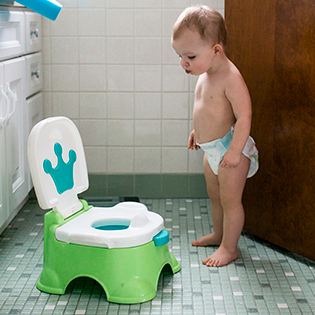Whether you call them snacks or mini meals, noshing on small bites throughout the day can be a healthy — and easy — way to get your fill of essential nutrients, especially during pregnancy.
Little nibbles are easier to stomach when you’re combating stomach issues like nausea and food aversions in the early weeks of pregnancy. Healthy snacks are also a good way to get nourishment later on in pregnancy when you get that stuffed, can’t-eat-another-bite feeling after just a few forkfuls.
Snacks, too, are a smart form of nutritional insurance. While your calorie needs ramp up during pregnancy (500 more per day by the third trimester), it’s more crucial than ever to use those extra calories to fill your body with key nutrients that support your baby’s development — particularly protein, folate, calcium, vitamin D, DHA (omega-3 fatty acid), iodine and iron.
So what should you be munching on these days to keep your energy up in between meals and give your little one an extra dose of nutrition? Good pregnancy snacks are delicious, healthy and filling — and there are no shortage of ideas. No matter what flavors you're craving, here are some of the best snack ideas for pregnancy.
Healthy dry snacks for pregnancy
Sure, a cup of yogurt or a smoothie can be a nice pick-me-up. But sometimes you need a dry option that’s easy to transport and can sit in your bag for hours without needing to be refrigerated.
In addition to being convenient, dry snacks often contain whole grains, nuts and dried fruit, so they’re a great way to get more fiber into your diet to help prevent pregnancy constipation, as well as fill up on protein and B vitamins. Dry snacks also tend to be pretty easy to eat when you’re queasy.
Do You Need a Supplement?
- Trail mix. The nut, seed and dried fruit combo has protein, healthy fats and fiber to keep you going for hours. Add some fun mix-ins like cashews, pumpkin seeds, dried cherries or dark chocolate chips.
- Granola bars. Think of them as trail mix in bar form with the addition of hearty, fiber-packed oats. Some granola bars can be as sweet as desserts, however, so look for options made with real fruits and nuts.
- Whole grain pretzels. To confirm that yours are truly made with whole grains, check the label. If the first ingredient listed contains the word "whole" (like "whole wheat" or "whole oats") you’re probably good to go.
- Fresh fruit with a nut butter packet. Options like bananas and apples can sit at room temperature. A dollop of nut butter on top adds protein and healthy fats so you stay satisfied for longer. Look for single-serving nut butter packets that are easy to toss in your bag and head out the door.
- Air-popped popcorn. Good news: Popcorn is a fiber-rich whole grain. Look for air-popped options and add your own seasonings, like a sprinkle of cinnamon or some savory nutritional yeast..
Healthy protein snacks for pregnancy
Protein is vital for your baby’s growth and development, but it’ll also help keep your blood sugar levels stable — which can keep you fueled longer and stave off low blood sugar symptoms like headaches, nausea and irritability.
- Hummus and whole wheat crackers. You’ll get protein and healthy fats from the chickpea dip, plus wholesome carbs from the crackers. For a bigger appetite, add some sliced raw veggies and a handful of olives.
- Edamame. The savory soybean pods are loaded with protein and fiber, along with iron, folate and magnesium. To boost the flavor, warm the pods in the microwave and sprinkle with salt and sesame seeds.
- A handful of nuts. High in protein, fiber and healthy fats, nuts might just be nature’s perfect snack. Each type of nut has its own nutritional perks (almonds offer calcium, walnuts have omega-3s and peanuts serve up vitamin E), so aim for a variety.
- Roasted chickpeas. They’re crunchy and savory like chips, only way more nutritious, thanks to plenty of protein, fiber and iron. Make your own by baking canned, drained and rinsed chickpeas with olive oil and your favorite seasonings until crispy, or buy them pre-made. Extra hungry? Make a snack plate with roasted chickpeas, cherry tomatoes and a few cubes of feta cheese.
- Hard-boiled eggs. Cook up a big batch on the weekend, and you’ll have a ready-made snack all week long. Eggs pack a protein punch, and they’re a good source of vitamin D, which helps build your baby’s bones and teeth.
Healthy calcium-rich snacks for pregnancy
Get 1,000 milligrams daily is a must for strong bones and teeth — both for your baby and you. Since meeting your needs at mealtime alone isn’t always easy, calcium-packed snacks can help fill the gap.
More Healthy Eating Tips
- Plain yogurt with fruit. Yogurt has protein and calcium, plus probiotics that could protect against pregnancy-related constipation. Choosing plain over flavored options will save you loads of added sugar; instead, add a healthy dose of sweetness with fresh fruit like berries, chopped mango or diced apple.
- String cheese. These pre-wrapped bites are great for grabbing and eating on the go, and each stick serves up around 200 milligrams of calcium. For a more filling option, pair string cheese with whole grain crackers or wrap it in a whole wheat tortilla.
- Cottage cheese. A cup serves up around 250 milligrams of calcium along with a whopping 24 grams of protein. Like yogurt, you’re better off sticking with plain varieties and adding extra flavor yourself. Stir in chopped fruit, add a sprinkle of honey or cinnamon, or season with salt and lemon juice and use as a dip for veggies.
- Whole grain cereal with milk. You’ll get 300 milligrams of calcium plus 8 grams of protein in a cup of low-fat milk, and pairing it with whole grain cereal turns the bone-builder into a filling snack or mini meal. For a wholesome cereal, look for options with fewer than 10 grams of added sugar and at least 3 grams of fiber per serving.
- Fruit smoothie with milk. Simple combos like banana, almond butter and milk are easy to sip when you’re queasy. When you’re up for more flavor, try frozen cherries with cocoa powder, mango and pineapple, or berries and peanut butter.
Healthy sweet pregnancy snacks
It’sperfectly fine to treat yourself to the occasional cookie or brownie. But if your sweet tooth tends to rear its head on a regular basis, it’s worth having a handful of healthy (and still satisfying) options at the ready.
- Medjool dates with almond butter. Sweet and sticky, dates are truly nature’s candy. Add an extra layer of deliciousness — and make them more filling — by dunking the dates into protein-packed almond butter.
- Frozen banana "ice cream" with chopped nuts. Process a chopped, frozen banana in the food processor until smooth to make a creamy, naturally sweet ice cream that tastes just like the real thing. Top with chopped walnuts and a cherry for a sundae-like treat.
- Whole grain toast with nut butter and chocolate chips. Slather a tablespoon of peanut or almond butter on a slice of whole grain toast and top with a tablespoon of mini dark chocolate chips.
- Dark chocolate and a clementine. Aim for chocolate containing 70 to 85 percent cocoa. The higher cocoa content means your chocolate will have more nutrients (like iron and magnesium) and less added sugar. Portion-wise, a one-ounce square is perfect.
- Frozen grapes. When you’re looking for a sweet nibble but aren’t actually all that hungry, this icy treat fits the bill. Frozen grapes are refreshing and vitamin-packed, but since they don’t have any protein or fat, they’re not all that filling on their own.
Healthy evening snacks for pregnancy
Plagued by a rumbling tummy before bed? Pick a light, easy-to-digest option with nutrients that will help lull you to sleep.
- Whole grain cereal with milk. The combo of complex carbs and protein will help you feel sleepy. Again, stick with cereal options containing fewer than 10 grams of sugar per serving. Not only are they more nutritious, but eating lots of sugar right before bed might keep you awake.
- Cottage cheese with raspberries. Lean protein sources like cottage cheese contain tryptophan, an amino acid that can make you drowsy. In addition to lending sweetness, raspberries are a natural source of the sleep-promoting hormone melatonin.
- Whole wheat peanut butter toast with a banana. The complex carb-protein combo might be sleep-inducing, especially when you add a few slices of banana, another fruit source of melatonin.
- Warm milk with cinnamon. Warm milk isn’t just soothing — according to the National Sleep Foundation, there may be some link between the tryptophan and melatonin content of milk and improved sleep. Cinnamon adds a yummy sweet note, but you could also try other spices, like ground nutmeg or cardamom.
- A handful of walnuts. In addition to their protein, healthy fats and omega-3s, eating walnuts can boost your blood levels of melatonin and help you sleep more soundly.
Snacks to avoid during pregnancy
The best pregnancy snacks are nutrient-dense options that keep you energized while delivering much-needed vitamins and minerals to you and your growing baby. So it’s worth stocking up on lots of wholesome options to have on hand.
While there’s nothing wrong with the occasional treat, the following foods tend to be low in nutrients and high in calories, but not the satiating fiber, protein and complex carbohydrates that help you feel full:
- Cookies, cakes or sugary baked goods
- Candy
- Ice cream
- Potato chips
- Soda, sweetened tea or sugary juices
- Sugary coffee drinks
Of course, you’ll also want to steer clear of the usual foods that are off-limits during pregnancy, including raw fish, undercooked meat, deli meat, undercooked eggs, unpasteurized cheeses or juice, and alcohol.
Healthy snacking tips for pregnant women
Snacks are a must for staying satisfied and energized when you’re pregnant, but even so, you likely don’t have hours to spend planning or prepping them. Some strategies to make smart snacking simpler:
- Go for a combo approach. A balanced snack containing protein, complex carbohydrates and healthy fats will keep you fuller longer, so you’re not running to grab another bite half an hour later.
- Keep your kitchen stocked. Have a variety of healthy options at the ready, like fresh fruit, nuts, plain yogurt, cheese, whole grain crackers, nut butter and hummus.
- Prep grab-and-go snacks ahead of time. Pick two or three snacks for the week, ready a big batch and portion them out into individual servings that you can toss in your bag when you head out the door or reach for when the urge to snack strikes. Mix up a batch of trail mix, boil a dozen eggs and season up a big bowl of popcorn, then divide into single-size baggies.
- Keep your snack needs in perspective. Remember, you likely don't need any additional calories in the first trimester, in the second trimester you need between 300 and 350 extra calories, and in the third trimester you need 500 extra calories. Don't worry about counting calories, though. Listening to your appetite and stocking up on nourishing picks will keep you on track.
Snacks can be a godsend when you’re pregnant — both for keeping up your energy and sneaking extra nutrients into your diet. The key is sticking with wholesome options. Here’s to smart, healthy snacking!











































 Trending On What to Expect
Trending On What to Expect





